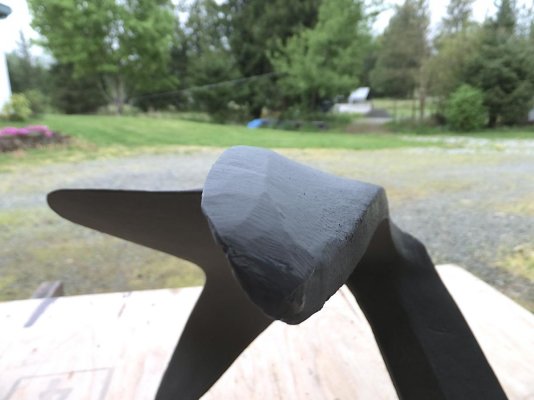Following are the editors comments in another test for the Spade and Rocna. They both sound much the same but the Rocna had better holding numbers at 5-1 scope. Sand and mud mixed bottoms at four locations. Some of the structure of the Rocna part was scrambled in the pasting. The words are there though.
"The Spade, launched in 1999, was a revolution in anchor design, with French inventor Alain Poiraud pioneering the use of concave blade and surface area to give holding power rather than weight. It uses a wedge shaped ballast chamber to ensure weight is over the tip, so it digs in instead of ploughing a trench. For ease of stowage the Spade’s shank disconnects, but make sure you use the correct locking nut, as one boater lost his boat because of the wrong connector.
The Spade has proven itself in most tests and ours was no exception. At 5:1 scope it repeatedly held at the maximum 5000lb. On veering tests it held up to 5400lb. The beach pull tests showed how the weighted tip dug in instantly, with no drag-time. On shortened 3:1 scope, and at the third location, results were mediocre. Nevertheless, this was one of the top three performers on test."
TheRocnaincorporatescleverideasfromdifferentdesignsintoanextremelyeffectiveanchor.A long,angular Delta-esque shank meets a large concave surface blade area associated with the Spade, with a chisel-blade tip and ‘skids’onthebackofthebladesensuringrapidpenetration.LiketheDelta,ithasnomovingpartsandisself- launching. Designed by sailing veteran and New Zealand boat-builder Peter Smith, Rocnas are made from alloy steels with hot dip galvanised zinc finish. Weight is in the tip, not the heel.
The Rocna was a powerful, impressive performer in our tests, recording instant sets at multiple 5000lb maximum o near max) pulls at 5:1 scope. On the second 5:1 pull, it released suddenly at max tension when revs were reduced, only to reset instantly at 4300lb of resistance, which was astonishing for an instant set. It was less impressive at 3:1 scope and under veering tests, but remained a consistent top performer.


 for the new side view!
for the new side view!



